![]()
![]()
![]()
Use LEFT and RIGHT arrow keys to navigate between flashcards;
Use UP and DOWN arrow keys to flip the card;
H to show hint;
A reads text to speech;
34 Cards in this Set
- Front
- Back
|
The 4 components of digestion |
Ingestion Digestion Absorption Egestion |
|
|
4 STOMACH LAYERS |
Circular Longitudinal Oblique Rugae |
|
|
Small Intestine Parts |
DUODENUM JEJUNUM ILEUM |
|
|
Maltase |
Maltase breaks down maltose into Glucose |
|
|
Duodenum |
Maltase Erepsin Disaccharidase |
|
|
Erepsin |
Converts short chained peptides to individual amino acids for absorption |
|
|
Disaccharides |
Breaks down dissaccharides into monosaccharides for absorption |
|
|
Sodium Bicarbonate |
Raises ph from 2.5 to 9 |
|
|
Lipase |
Breaks down fats to glycerol and fatty acid |
|
|
Trypsin |
Converts long chained peptides into short chained peptide |
|
|
Peptide |
Chain of amino acid |
|
|
Amylase |
Starch break down to maltose |
|
|
Secretion from liver |
Bile Breaks down fat molecules Makes large fat globules smaller to be digested by lipase Secreted by liver stored in gall blader |
|
|
Jejunum |
More absorption |
|
|
Ileum |
Rest of absorption |
|
|
Products of digestion |
Fats Amino acids Glucose Vitamins Minerals |
|
|
Glucose |
primary fuel for all cells |
|
|
Fats |
Big energy source Can store energy Insulation to protect organs Protective coating on nervers |
|
|
Amino acids |
Cell growth and repair Produces enzymes 20 amino acids 8 can be digested |
|
|
Vitamin and minerals |
Growth and metabolic pressures Elements required for Body function |
|
|
Rh factor |
An antigen found on the red blood cells of most people With it they are rh positive With out it they are rh negative |
|
|
Blood transfusions |
Antigens and antibodies must be the same to work If different antigens are mixed blood would clump together this would be fatal |
|
|
2 types of circulatory systems |
Open circulatory system Closed circulatory system |
|
|
Open circulatory System |
Slow moving blood bathes tissues O2 rich and o2 poor blood mix |
|
|
Closed circulatory system |
Blood circulates through closed vessels O2 rich and o2 poor NEVER mix |
|
|
Veins |
One way valve Little muscle Fragile Takes blood to heart |
|
|
Artery |
Elastic Thick muscle Takes blood away from heart (a away) |
|
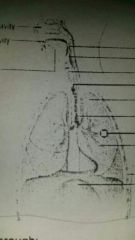
|
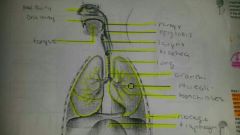
|
|
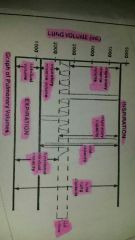
|
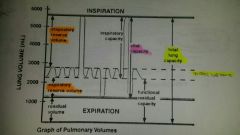
|
|
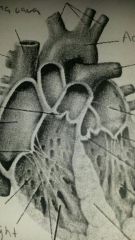
|
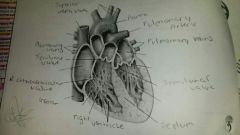
|
|
|
Sphincter |
Cardiac Pylorus |
|
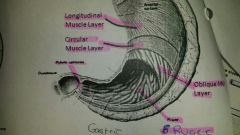
|
Lcor |
|
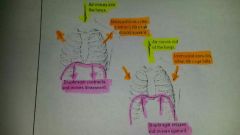
|
Air moves into the lungs Intercostal muscles contract ; ribcage moves up ward Diaphragm contracts and moves down ward (then opposite) |
|
|
Blood through heart |
O2 rich to O2 poor (gas exchange) (L-R) Aorta Artery Arteriota Cappilaries Venevelles Veins vera cava |

